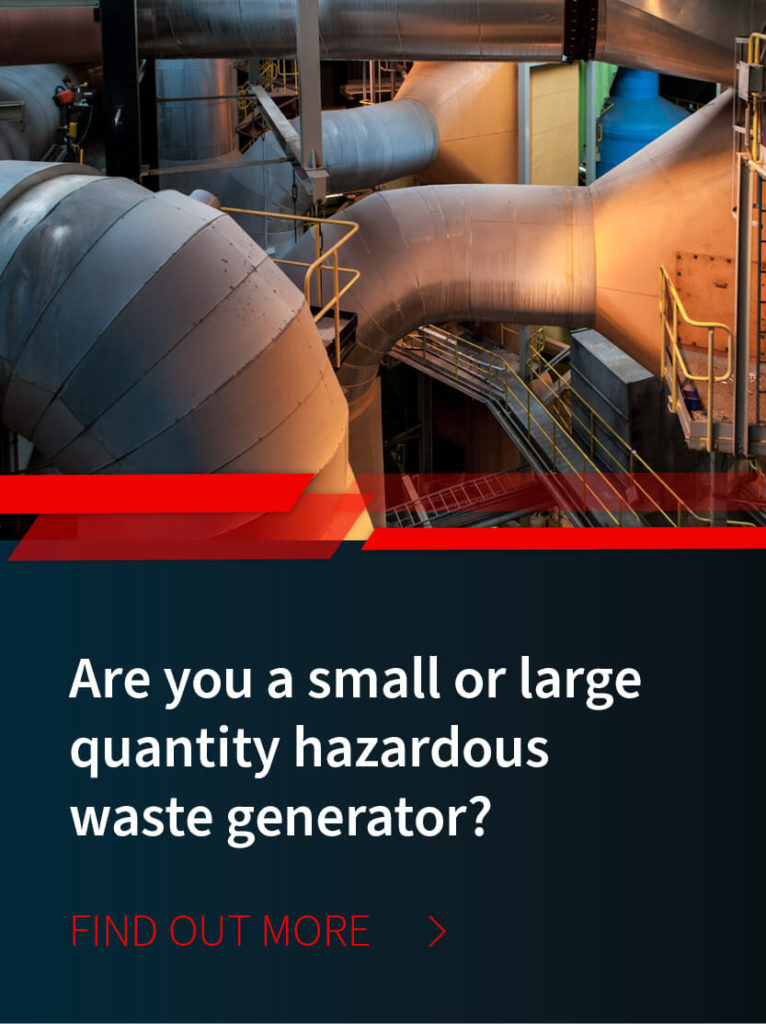
/ IN THIS BLOG
PFAS chemicals are one of the most controversial and discussed waste products in recent years. Per- and polyfluoroalkyl substances (PFAS) is the term used to collectively describe a large group of human-made chemicals that have been used in industrial and consumer products around the world since the 1950s.
Widely used due to their resistance to heat, water, and oil, PFAS are useful in a variety of applications, making a total ban or switch from them difficult. From the non-stick coating on cookware to the wrappers that keep grease from soaking through burger wrappers and popcorn bags, PFAS are widely used in the food industry. They are also the key to making clothing water repellent and carpeting and upholstery stain-resistant. Beyond consumer applications, PFAS have also been widely used in firefighting foams to contain fuel fires.
Regulatory agencies and researchers are increasingly focused on understanding the impacts of PFAS and developing strategies to reduce their presence in the environment and in consumer products.
01 / What makes PFAS so harmful?
What makes them so useful however, is also what makes PFAS so concerning. PFAS are called "forever chemicals" because of their chemical makeup that causes them to not break down easily in the environment or in the human body. This persistence can lead to accumulation over time, and the full impact of their potential health effects is just beginning to be undercovered.
Research has linked exposure to certain PFAS to a variety of health issues, including increased cholesterol levels, changes in liver enzymes, an increased risk of high blood pressure or pre-eclampsia in pregnant women, lower birth weights and an increased risk of kidney and testicular cancers.
Exposure is a risk to the general public because there’s no easy way to assess a potential risk. You can’t see, smell or taste PFAS and there’s no immediate effect. It can quietly contaminate drinking water sources, be consumed in contaminated fish, meat or produce, or residually when food becomes contaminated by packaging containing PFAS. Breathing in contaminated soil or dust from household items containing PFAS are other ways the chemicals can enter the body.
02 / What are the latest developments in PFAS regulation?
Businesses that deal with PFAS face a range of implications, including regulatory, financial, and operational challenges. Governments worldwide are implementing stricter regulations on the use and disposal of PFAS. It’s become essential to stay informed and compliant with ever-evolving regulations to avoid fines and legal issues, particularly since in the future, businesses may be required to clean up contaminated sites, a costly and time-consuming prospect.
In 2024, the EPA published interim guidelines for the destruction and disposal of PFAS and PFAS-containing materials (excluding consumer products). This established maximum contaminant levels for PFAS in drinking water, which will require water utilities to monitor and treat PFAS to meet these standards. This document however did not impose any specific requirements for PFAS materials disposal and there remains no EPA regulation surrounding the destruction and disposal of waste materials that contain only PFAS. So if you have PFAS to dispose of there’s nothing to worry about, right? Wrong.
The EPA introduced a strategic roadmap in 2021 which highlighted its approach and goals for addressing PFAS chemicals and their dangers. Slowly but surely, actions are being taken to reign in these forever chemicals. Beyond the interim guidelines, in April of 2024, the EPA finalized adding two PFAS, perfluorooctanoic acid (PFOA) and perfluorooctanesulfonic acid (PFOS), to its list of hazardous substances.
Listing PFOA and PFOS as "hazardous substances" does not mean they are classified as "hazardous waste" under the Resource Conservation and Recovery Act, but it mandates the U.S. Department of Transportation to label them as "hazardous materials" for transport under Hazardous Materials Regulations.
These developments reflect a growing consensus regarding the risks posed by PFAS and a concerted effort to mitigate their impact on the environment and public health. This means companies who produce and handle PFAS materials would be wise to develop cost-effective strategies now rather than be forced to scramble for a less-than-ideal solution at the last minute when new regulations take effect.
03 / What treatment options are available for PFAS disposal?
PFAS waste disposal options are evolving as researchers and regulators look for the most effective methods to manage these “forever chemicals.” Although it can be quite challenging to dispose of chemicals designed to remain intact, there are several current disposal options.
Reverse Osmosis (RO): RO is a widely used technology for removing PFAS from water. It involves forcing water through a semipermeable membrane that blocks PFAS molecules, resulting in purified water and a concentrated waste stream that contains the removed PFAS. This method however still requires the further treatment or disposal of the removed PFAS.
High-Temperature Incineration: Temperatures above 1,100°C can break down PFAS molecules, however this method requires strict controls to prevent the release of harmful by-products and ensure complete destruction of the chemicals.
Granular Activated Carbon (GAC): GAC is commonly used to adsorb PFAS from contaminated water. Once saturated, the carbon must be either regenerated or incinerated to destroy the adsorbed PFAS.
Ion Exchange Resins: Ion exchange resins can selectively remove PFAS from water, but, just like GAC, spent resins need to be regenerated or disposed of, typically through incineration.
Advanced Oxidation Processes (AOP): AOPs use strong oxidants, such as hydrogen peroxide and ozone, to degrade PFAS in water. This method can be combined with other treatments but its downsides include being energy-intensive and costly.
Secure Landfills: Long-term storage is one of the most common and widespread disposal methods for PFAS-containing waste. PFAS should be stored in secure landfills designed to prevent leaching into the environment. While not a permanent solution, it provides a temporary measure until more effective disposal technologies are available.
Researchers in the waste disposal industry are working on creating new solutions for the challenge of degrading PFAS. From electrochemical oxidation, which uses electrical currents to degrade PFAS and high-temperature plasma to bioremediation with microorganisms and phytoremediation, which uses plants to remove PFAS from contaminated environments, there are many options still in the experimental stage which may in the future hold the key to solving the problem of “forever chemicals.”
04 / The Future of PFAS Remains a Developing Story
Much more still needs to be understood about the impact PFAS have on the environment and health. So expect new developments to take place which potentially further limit exposure, disposal and possibly manufacturing. By keeping an eye to the future, your business will be in a much better position when new regulations or guidelines take effect.
At MCF Environmental, we work hard to stay ahead of the curve when it comes to the latest in disposal technology and compliance. We’re here to help you always remain safe and responsible with all of your disposal practices. Find out more about how we can help you dispose of your PFAS waste and other types of chemicals. Reach out to us for a custom consultation.
Robert Losurdo
President, COO








